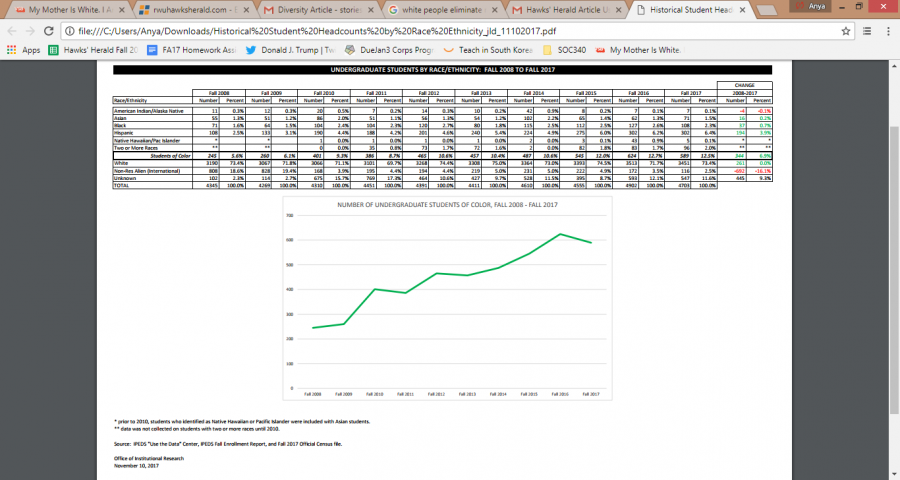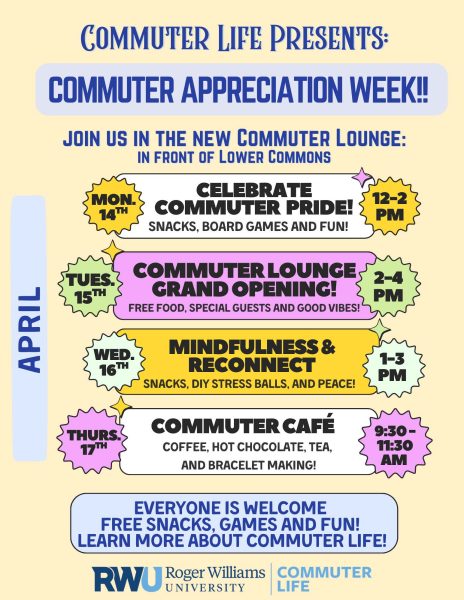RWU’s racial diversity: 2008 – present
Racial diversity on a college campus is oftentimes something that prospective students not only expect, but also look for when choosing a university to attend. It’s true that meeting people different from you can teach you about different cultures, ways of thinking, and generally make you a more accepting person.
What does it say, then, that only 12.5 percent of undergraduate students at Roger Williams University are students of color? It’s important to note that this number does not include international students as students of color based on the tracking methods of the university’s Institutional Research department.
“RWU has made progress over the past ten years with regard to increasing the racial/ethnic diversity of its undergraduate students,” said Jennifer Dunseath, the assistant vice president of Institutional Research. “As you can see, the number of undergraduate students of color has more than doubled over the past ten years.”
Between 2008 and 2012, the number of students of color was rising more rapidly than it did the following five years. Dunseath suggested that Admissions use the data and find out what types of methods the university was using at the time that attracted so many students (i.e. scholarships, high school outreach, etc.). However, according to the graph, although the number of students of color seems to be on the rise, there has also been quite a dip in the international student population.
Dunseath stated that the decrease doesn’t necessarily surprise her, adding that, “We are in a political climate in which it might not be as welcoming for international students as it has been in the past.”
“I’m glad that the numbers are rising,” said junior Jackie Limiern. “However, if you really think about it, 12.5% is still a really low number in terms of people of color. Even with international students of color, the most they could add is 2.5%, bringing the total to only 14.5%.”
Senior Mia Hayden expressed mixed feelings on the data, and spoke on her personal experiences in being a student of color.
“I’m not surprised but it still makes me upset that this school is not diverse… Roger Williams should try harder at reaching out to different types of communities outside the ‘white’ community,” said Hayden.
“Being able to find a good support group and the comfort of having people who “look like you” is important especially when you first come to a new place like college,” Hayden said. “Racial identity is something that starts to flourish when you come to college, and with a lack of diversity this is hard to develop.”
“I think that it is really unfair to put the ethnic minorities here into boxes. I don’t think that people realize sometimes that they are doing it. My racial identity is important to me, but it is not my defining factor,” Hayden continued. “I think that some people just don’t think when they ask questions like ‘what are you,’ ‘what do you identify as?’ At the end of the day does it really matter?”![]()
“I was very happy to see the progress over the last 10 years in terms of diversification on campus that we’ve made,” Dunseath concluded. “It’s part of the university’s mission and vision to serve students from all backgrounds, so it’s very important to everybody.”





